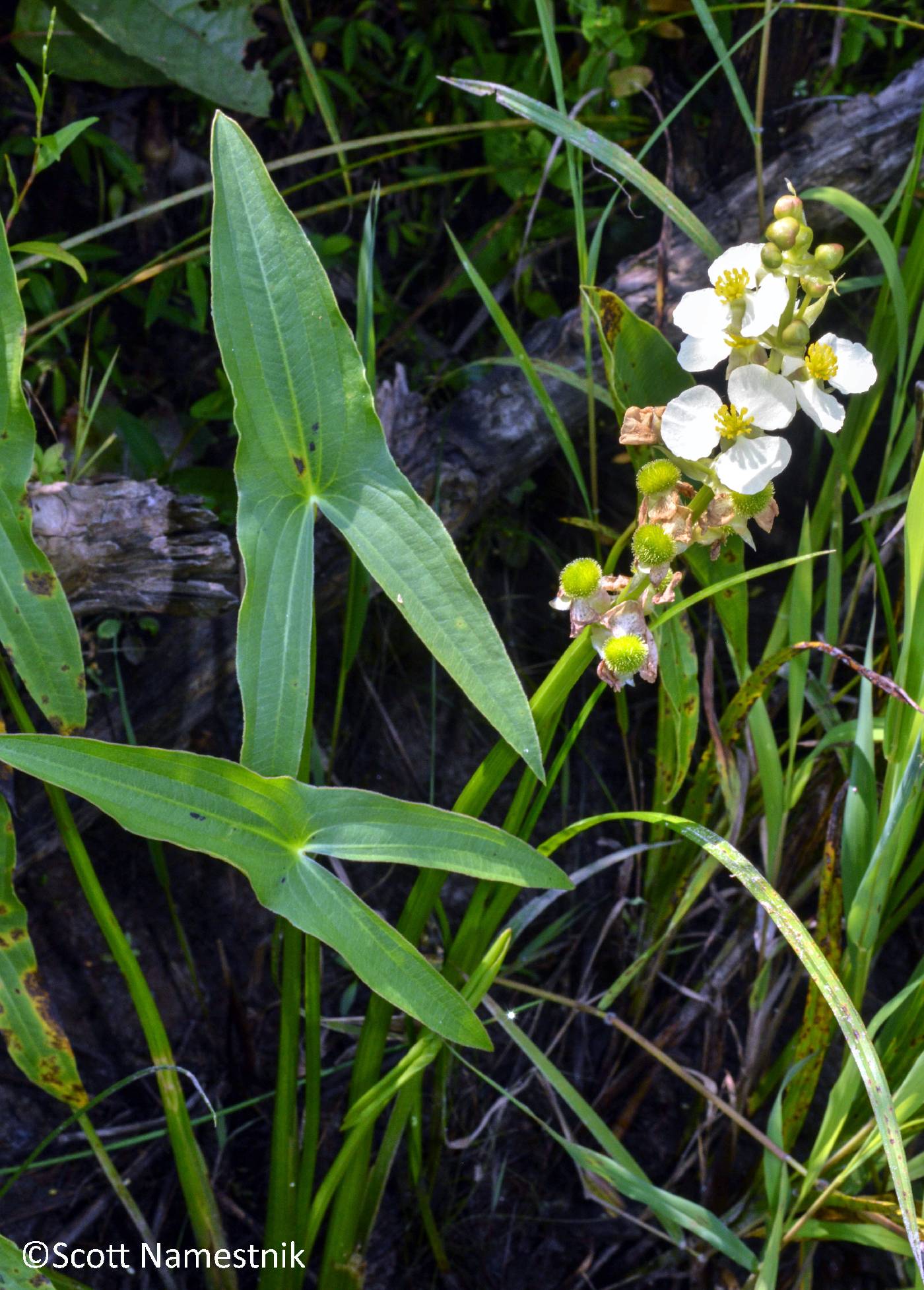Sagittaria
|
Family: Alismataceae |
Plants perennial, rarely annual, submersed, floating-leaved, or emersed, glabrous to sparsely pubescent; rhizomes often present, occasionally terminated by tubers; stolons often present; corms absent; tubers white to brown, smooth. Roots septate. Leaves sessile or petiolate; petiole terete to triangular; blade with translucent markings absent, linear to obovate, base attenuate to hastate or sagittate, margins entire, apex round to acute. Inflorescences racemes, panicles, rarely umbels, of 1--17 whorls, erect, emersed or floating, rarely submersed; bracts coarse or delicate, apex obtuse to acute, smooth or papillose proximally to distally. Flowers unisexual, the proximal rarely with ring of sterile stamens; staminate flowers pedicellate, distal to pistillate flowers; pistillate flowers mostly pedicellate, rarely sessile; bracts subtending pedicels, lanceolate, shorter than pedicels, apex obtuse to acute; pedicels ascending to recurved; receptacle convex; sepals recurved in staminate flowers, recurved to erect in pistillate flowers, often sculptured, herbaceous to leathery; petals white, rarely with pink spot or tinge, entire; stamens 7--30; filaments linear to dilated, glabrous to pubescent; pistils to 1500 or more, spirally arranged, not radiating in starlike pattern, distinct; ovules 1; styles terminal. Fruits without longitudinal ribs, compressed, abaxially keeled or not, abaxial wings often present, lateral wing often present, 1, curved, glands present. x = 11. Fls unisexual (the plants monoecious or rarely dioecious) or some of them perfect; receptacle large, convex; sep 3, reflexed in fr or persistently erect or spreading; pet 3, deciduous, white; stamens 7-many; pistils numerous, aggregated into a subglobose head on a large receptacle, appearing to be spirally arranged; achenes flattened, winged at least on the margins; infl racemose, with 1-12 mostly 3-fld whorls, each whorl subtended by 3 bracts, occasionally with floriferous branches substituting for fls at the lowest whorl(s), or the fl solitary and terminal in depauperate plants; rooted annual or perennial aquatics, the infl and usually also the lvs emersed; rhizomes sometimes with apical tubers. The lvs are all basal, typically with an aerial, expanded, often sagittate blade on a petiole about as long as the water is deep. In deep or swiftly moving water, wholly submersed lvs are produced by some spp.; these often take the form of ribbon-like bladeless phyllodia (the flattened petioles). Similar short, stiff phyllodia are produced in tidal sites. 25+, cosmop., mainly New World. (Lophotocarpus) Gleason, Henry A. & Cronquist, Arthur J. 1991. Manual of vascular plants of northeastern United States and adjacent Canada. lxxv + 910 pp. ©The New York Botanical Garden. All rights reserved. Used by permission. |

